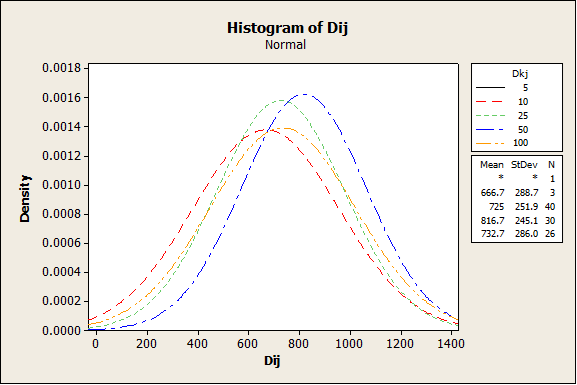Determination of the Potency of Drugs used in Treatment of Type2 Diabete (A Case Study of Taraba State Specialist Hospital Jalingo)
Keywords:
Diabetes, Insulin, Diabetic-drugs, Variance, PotencyAbstract
Diabetes is a medical condition in which the body cannot produce enough insulin to process the glucose in the blood. Type 2 diabetes is mostly diagnosed in order adults but it is increasingly seen in children, adolescent and younger adult. It is discovered that the rate at which patients are diagnosed of diabetes has been on the increase despite the series of diabetic drugs that are available. This prompted the researchers to carry out this research so as to determine the potency of drugs used in the treatment of type 2 diabetes. Data were collected from Specialist Hospital, Jalingo Taraba State. The data were used to obtain the relative potency and pooled variance as well as analyzing the potency of the diabetes drug. The result for the relative potency which is > 1 (1.62), means that the test preparation is less potent than the standard test preparation. We also observed that their confidence interval lies between (-12.88,17.05). Analyzing the significance difference between the standard test preparation and the test preparation, using the student t test we obtain calculated t=1.93 and the t value from the table=1.96. We conclude that since tcal=1.93 <ttab=1.96, we accept H1; and conclude that there is significant difference between Dji and Djk drugs (standard test preparation and test preparation respectively). This means that more effort is needed in the area of research for more diabetic drugs that will be highly effective in the treatment of diabetes.

Published
How to Cite
Issue
Section
Copyright (c) 2023 Charity Ebelechukwu Okorie, Martin Afam Nwaokolo

This work is licensed under a Creative Commons Attribution 4.0 International License.
How to Cite
Similar Articles
- Ezenwa Kelvin Iheanacho, Okenwa Uchenna Igwe, Princewill Ezenwa Ndubueze Onyemachi, GC-MS analysis and hypoglycemic properties of methanolic leaf extract of Cnidoscolus aconitifolius onalloxan-induced diabetic Wistar rats , African Scientific Reports: Volume 2, Issue 3, December 2023
- Hassan Ibrahim, Deborah Abolape Akwu, Reza Sharafdini, On topological indices and QSPR analysis of some drugs used for treating Coronavirus patients , African Scientific Reports: Volume 3, Issue 2, August 2024
- Abiola T. Owolabi, Kayode Ayinde, Olusegun O. Alabi, A Modified Two Parameter Estimator with Different Forms of Biasing Parameters in the Linear Regression Model , African Scientific Reports: Volume 1, Issue 3, December 2022
- Oluwagbenga Anifowose, Bitrus W. Tukura, Obaje D. Opaluwa, Detoxification of Ochratoxin A in Rice and Maize using ethanolic leaf extracts of Moringa oleifera and Vernonia amygdalina , African Scientific Reports: Volume 4, Issue 2, August 2025
You may also start an advanced similarity search for this article.




